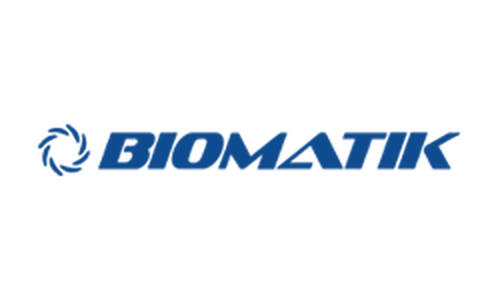Product Description
Recombinant Human Fibroblast growth factor 4(FGF4), partial (Active) is available at Gentaur for Next week Delivery.
Gene Name: FGF4
Alternative Names : Fibroblast growth factor 4; FGF-4; Heparin secretory-transforming protein 1; HST; HST-1; HSTF-1; Heparin-binding growth factor 4; HBGF-4; Transforming protein KS3; FGF4; HST; HSTF1; KS3
Expression Region : 54-206aa
AA Sequence : SLARLPVAAQPKEAAVQSGAGDYLLGIKRLRRLYCNVGIGFHLQALPDGRIGGAHADTRDSLLELSPVERGVVSIFGVASRFFVAMSSKGKLYGSPFFTDECTFKEILLPNNYNAYESYKYPGMFIALSKNGKTKKGNRVSPTMKVTHFLPRL
Sequence Info : Partial
Tag Info : Tag-Free
Theoretical MW : 16.9 kDa
Storage Buffer : Lyophilized from a 0.2 ?m filtered 1xPBS, pH 7.4
Endotoxin Level : Less than 1.0 EU/µg as determined by LAL method.-
Biological Activity : The ED50 as determined in a cell proliferation assay using BALB/c 3T3 cells is less than 10 ng/ml.
Storage : Short term: -20°C; Long term: -80°C. Minimize freeze and thaw cycles.
Research Area : Signal Transduction
Restriction : For Research Use Only. Not for use in diagnostic procedures, drug use, or for administration to humans or animals.
Relevance : Fibroblast growth factor 4(FGF-4) is a heparin binding member of the FGF family. The human FGF4 cDNA encodes 206 amino acids (aa) with a 33 aa signal sequence and a 173 aa mature protein with an FGF homology domain that contains a heparin binding region near the C-terminus. Mature human FGF4 shares 91%, 82%, 94% and 91% aa identity with mouse, rat, canine and bovine FGF4, respectively. Human FGF-4 has been shown to exhibit cross species activity. Expression of FGF-4 and its receptors, FGF R1c, 2c, 3c and 4, is spatially and temporally regulated during embryonic development. FGF-4 is proposed to play a physiologically relevant role in human embryonic stem cell selfrenewal. It promotes stem cell proliferation, but may also aid differentiation depending on context and concentration, and is often included in embryonic stem cell media in vitro. FGF-4 is mitogenic for fibroblasts and endothelial cells in vitro and has autocrine transforming potential. It is a potent angiogenesis promoter in vivo and has been investigated as therapy for coronary artery disease.
Function : Plays an important role in the regulation of embryonic development, cell proliferation, and cell differentiation. Required for normal limb and cardiac valve development during embryogenesis.
Involvement in disease :
Subcellular location : Secreted
Protein Families : Heparin-binding growth factors family
Tissue Specificity :
Paythway : MAPKsignalingpathway
Uniprot ID : P08620
 Euro
Euro
 British Pound
British Pound
 US Dollar
US Dollar








